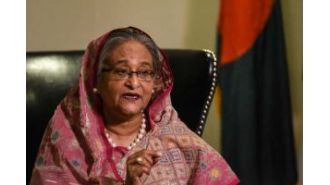The National Broadband Plan
I went down to Washington, DC yesterday to participate in an event that celebrated the 25th anniversary of .com. I spoke on a panel (yes a hated panel) moderated by Kara Swisher and including Aneesh Chopra, CTO of the Federal Government, Arianna Huffington, and Ken Silva, CTO of Verisign.
Kara started out the discussion by holding up a binder that included the FCC's National Broadband Plan that was submitted to congress this week. She had a lot of fun with the fact that our nation's broadband plan was being distributed to congress and the media in paper form in a binder.
Notwithstanding the packaging of the plan, I am a big fan of the effort by our administration, led by the FCC, to change our country's lackluster performance in the area of broadband infrastructure. John Chambers, CEO of Cisco, is also a fan and he just wrote this in Business Week:
If the U.S. military ranked 17th in the world, you can bet that as a
nation we would make strengthening our armed forces a national priority.
Yet that's just how the U.S. stacks up against the rest of the world in
terms of access to high-speed Internet connections. The vital
communications systems that make our economy work and serve as a
platform for business innovation and social interactions are
second-class.
I said to the panel, the audience, and our government's CTO yesterday that I believe the most important thing we can do in the area of broadband infrastructure is to increase the amount of wireless spectrum available for broadband internet. The fact is that wires, fiber, and cable aren't going to get us where we need to go. We can spend billions laying more and it will be a waste of money. We can't get to the speeds, capacity, and coverage we need with last century's technology. We need to lead the world in the development of new technology and we need to deploy it here first.
The national broadband plan does call for another 500mhz of hiqh quality spectrum to be used for "terrestrial broadband services" over the next decade. This blog post explains how that is proposed to happen. It appears that most of this 500mhz, if not all of it, will come from the broadcast television industry.
That seems to be politically realistic but there is a whole lot more excellent spectrum out there in the hands of industry, from broadcast TV, to broadcast radio, to wireless carriers that is locked up in the hands of one single provider. And that's huge problem.
As I explained yesterday on the panel, there's huge difference between the efficiencies of circuit switched networks where the bandwidth is allocated entirely to one connection, and packet switched networks where the bandwidth is shared amount many connections. The same is true of wireless spectrum and the unregulated band where wifi devices operate is the best example of this. We have witnessed massive innovation and bandwitdth improvement in wifi devices over the past decade. This is due to the development of new standards, new hardware technologies, and new software technologies. When you take a technology and unregulate it and let the market operate, you'll get way better results than when you lock a technology up in the hands of one owner.
So what I'd like to see in the National Broadband Plan is to make that entire 500mhz available as unregulated spectrum where anyone and everyone can build technologies, devices, markets, and businesses in it. I believe if we did that, instead of auctioning it off to several large established wireless carriers, we would see the kinds of gains our country needs to improve our broadband infrastructure. We'd also lead the world in the development of these new wireless technologies and create a boatload of jobs in the process.






